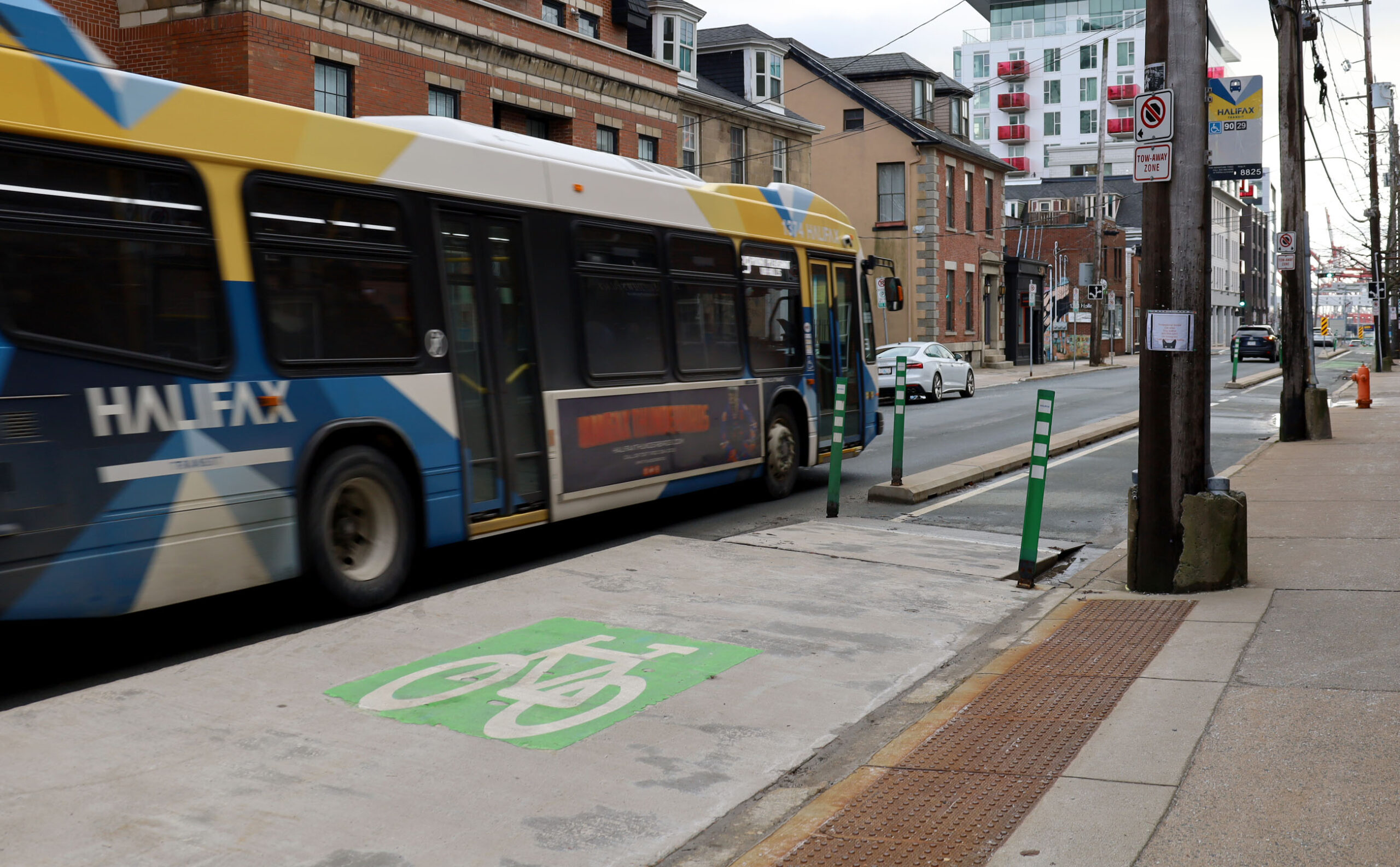CNIB cautions against island platform transit stops in the HRM
Committee asks transportation committee to research issue

caption
A Halifax Transit bus passes a stop with a bike lane on Hollis Street. This is a bike lane where cyclists ride on the road in their own lane, not an island platform stop.An advocate for the visually impaired cautioned municipal councillors Thursday against implementing island platform transit stops in the HRM.
Lui Greco of the Canadian National Institute for the Blind said the islands can cause significant safety issues for people with sight loss.
“We strongly encourage municipalities to look for alternatives,” said Greco, regarding island platform transit stops.
“Don’t do it,” he said. “If you have to do it, try to do it in such a way where you install the bike lanes where there’s no competition for road real estate between pedestrians and the cyclists.”
Greco presented to the municipality’s active transportation committee, which then directed the transportation committee to research the issue. This research will consider the recommendations outlined in the CNIB’s report, Cycling Infrastructure and People with Sight Loss – Design Challenges and Opportunities at Transit Stops Across Canada. CNIB received funding from the federal government to conduct the report.
Platform stops
Island platform transit stops prioritize cyclist safety by placing a cycling lane between a bus stop and a sidewalk. Cyclists are separated from buses, but risk interfering with pedestrians who are trying to cross the cycle lane to get to the bus platform.
Pedestrians with sight loss may not be able to detect cyclists approaching, if cyclists have stopped or if they plan to yield. Navigating to and from the raised platform can also be a challenge, especially with a guide dog.
These transit stops are in Canadian cities such as London, Winnipeg, Vancouver and Calgary. They were discussed at the meeting, but attendees were unclear if any exist in Halifax.
Committee member David MacIsaac said the city has bike lanes where cyclists ride on the road in their own lane. “Those are there because we don’t have the space to even do the islands,” said MacIsaac.
Committee member Milena Khazanavicius supported the need for inclusive cycling infrastructure.
“I want safe bike lanes,” said Khazanavicius. “But … it cannot be just about the cycling community. It has to be about everyone involved, and that includes parents with strollers, able-bodied people, and most definitely those who are wheelchair users as well.”
Khazanavicius, who is blind, guaranteed she would be the first one to boycott island bus stops if they were introduced in Halifax. “There is no way I will be crossing lanes of traffic and bike lanes when we can’t hear them nor see them,” she said.
The CNIB’s report only concludes that island transit stops pose a safety risk for those with sight loss. The next step, said Greco, is to assess different designs and ask how the designs mitigate the challenges presented in the report.
“We have been sharing this report widely,” said Greco. “Our goal is to further thinking. We hope that there are better alternatives. We don’t know what they are.”
About the author
Aidan Rawding
Aidan is in her fourth year of the BJH program at King's.
